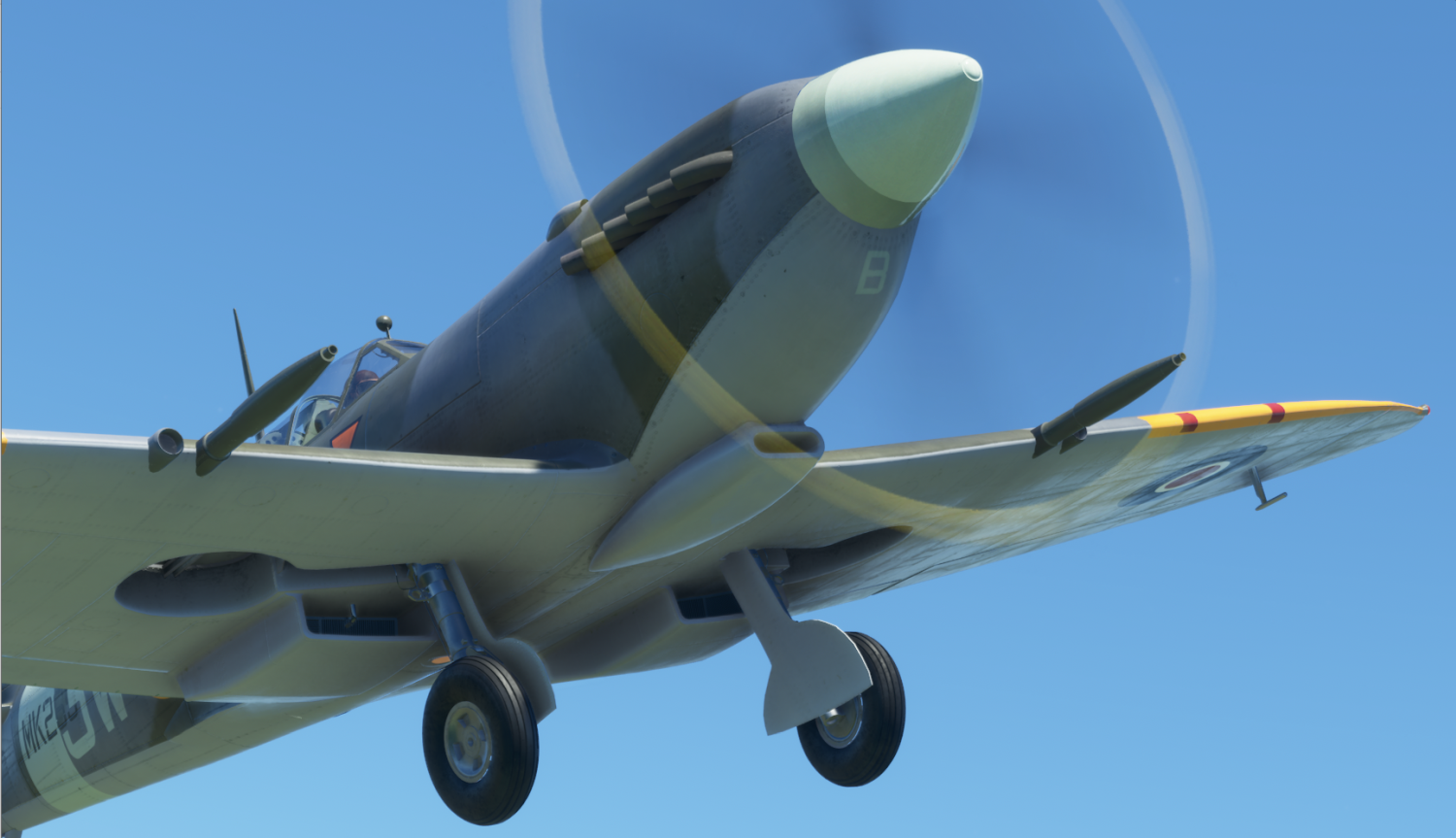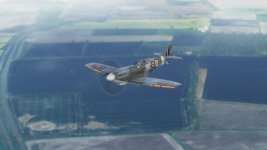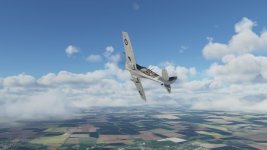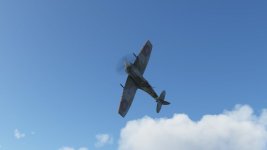I think the flying qualities of the Spitfire Mk.IX have been captured very well by FlyingIron. It is a more true-to-life flight model than the RealAir Spitfire was in FS2004/FSX/P3D.
As in the case of the real thing, it doesn't take full power to get airborne. In all of the pilot reports I've read over the years, 8+ boost is most often cited for takeoff power, which despite being less than half the available power (+18 boost WEP), it is more than ample. Some modern-day Spitfire Mk.IX operators only use +6 boost for takeoff, and that is sufficient with the FlyingIron Spitfire Mk.IX as well. With fuel only in the bottom tank and +6 boost, 3000 RPM, from brake release it only takes just over 15 seconds to be passing through 90 mph and flying. The correct takeoff trim settings in the Spitfire Mk.IX are +1 elevator (nose up) and 75%-100% right rudder trim, and this is true of the FlyingIron Spitfire Mk.IX as well. On takeoff, especially now following the latest update, it requires some right rudder and right aileron to overcome the torque and p-factor (again, just like the real thing). The rudder is very effective, however, so it is easy to keep it straight with only a little foot pressure.
For climb I typically use +5 boost and 2600 RPM, and it will maintain a 2,000 fpm climb rate at those settings. For cruise I usually use +2 boost and 2300 or 2400 RPM, which gets me about 215 mph indicated. All of those settings are in the ballpark of what is used by Spitfire operators today. In the air, the aircraft is a lot of fun to toss about in the virtual sky. You can really pull and wrap it around and, just like the real thing, it doesn't require a lot of airspeed to do so. The elevators and rudder are very responsive and have a lot of authority. Aileron authority is good, but the roll rate, just like most real Spitfires, is not very fast when compared to some of the other fighters of WWII (such as the P-40). The 'feel' seems all very accurate to what I've read. The clipped-wing version rolls a bit faster than the full-span wings, while it feels like the full-span wings allow you to climb better than the clipped-wing version. Stall speeds appear to be the same no matter which version you're flying. The "virtual stick forces" are very light and responsive, which is how the real-world Spitfire stick forces are described.
When setting up to land, the Spitfire doesn't slow down too easily, but this is handled just as real-world operators must, with an overhead break - flying at or below pattern altitude, down the length of the runway, and pulling up into a crosswind mid-field with a 3+ G turn, the speed bleeds right off to the 160 mph gear and flap speed as you level out on the downwind leg. Gear is selected down when on downwind and flaps are selected down just before the base turn or midway through the base turn depending on preference.
The stall speeds seem to be at least a few mph too slow when compared to the book stall speeds of the real Mk.IX. I tend to shoot for about 95 mph before the threshold and as I cross the threshold I pull the power off and keep the stick back until it settles onto the runway in a three-point attitude (of course just playing it by feel, not paying attention to the airspeed at that point). The real Spitfire Mk.IX has no inherent tendency to swerve or groundloop on landing, which is how the FlyingIron Spitfire behaves as well. However, because of the narrow track landing gear, it does want to dance a bit sometimes after touching down, and you have to be very mindful with the ailerons in addition to rudder and elevator on landing rollout. As they say, you don't stop flying it until you're parked and the engine is off.
Also, it will easily nose over if you are hard on the brakes or add too much power while holding the brakes - again, just like the real thing.














 Putting up the "B" on the cowling was a challenging job with all the scaling and warping...
Putting up the "B" on the cowling was a challenging job with all the scaling and warping... 





